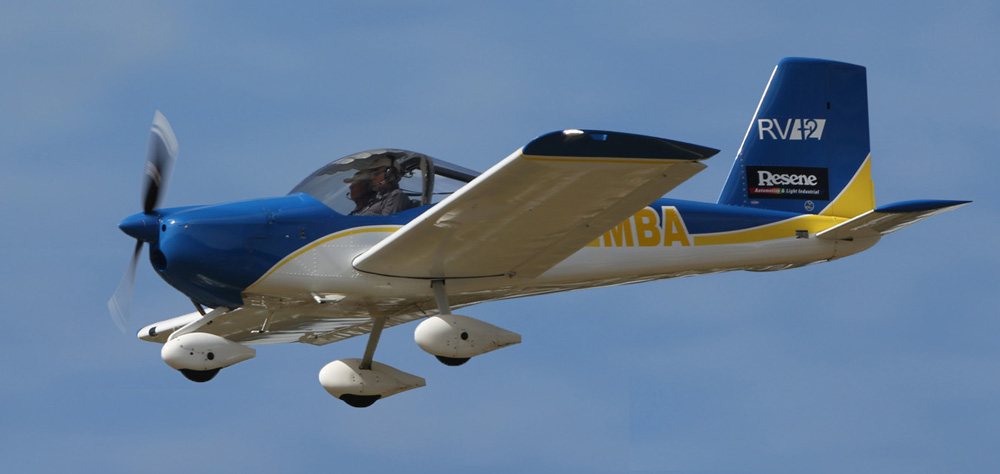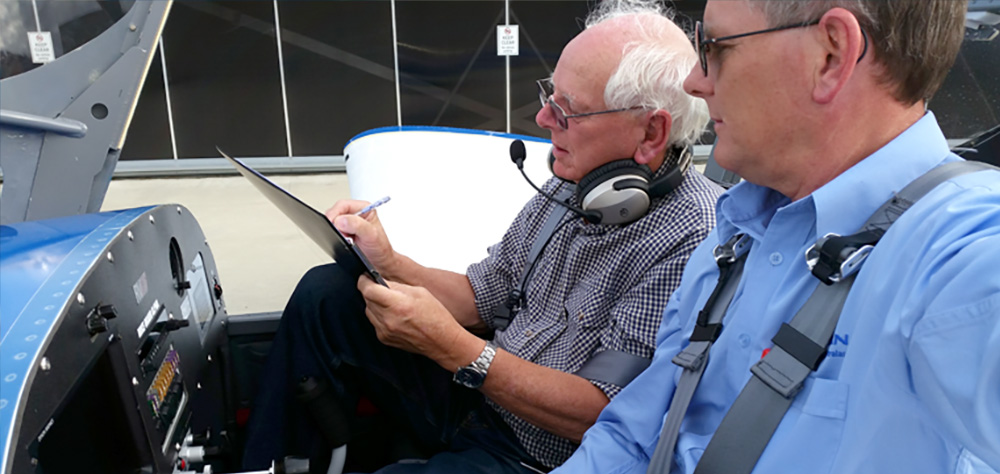Fatal accident stats are not just numbers. They’re real people who leave real people behind.
On 14 June 2019, Mike Evans was flying back to Queenstown after a Bell helicopter conference in Cairns.
When he landed in the late afternoon and turned on his phone he saw he’d missed several phone calls, and from people he would not normally hear from, in such a short space of time.
A bit preoccupied by this, he walked through into the arrivals hall, intending to pick up his car and drive home to Arrowtown.
Then he saw his wife, Kate, and their two children, waiting for him in the terminal.
“I knew straight away – it was Dad.”
“He was a good father”
Mike can’t remember the first flight he took with his father, Jim. Mike says he was just one year old – but he says he flew countlessly with his dad over the years.
“I’ve got a lot of really good memories – from about the age of four – of flying with him. Piper Cubs, Cessna 180s, Bölkow 208s, all kinds of aircraft. There were local flights, cross-country flights, formation flying, banner towing, and night flying as well. Over the years, I sat in the corner of many smoko rooms listening to cool stories.
“I got my own PPL, and then he flew with me – me as pilot-in-command.
“And he was very good, very generous when it came to that sort of thing. He’d say, ‘Oh, you know, you can sit in the left seat, and you can fly today’.
“I’ve got some fantastic photos of him and me in the cockpit together. Yeah, he was a good father.”
Jim was a pilot and aviation engineer, and Mike became a pilot and aviation engineer.
“We were close. He lived in Whitianga and I’m in Arrowtown, but we had a conversation every single Friday. It was just something that we did. If we didn’t catch up at any other time, it would always be a Friday night phone call.

Jim Evans was the prime mover behind the Mercury Bay Student Aviation Trust – engineers and secondary students working together to construct a Van’s RV-12. This is their first aircraft, MBA. Jim’s influence, passion, and dedication to aviation continues. The trust’s 5th aircraft is taking to the skies in 2023, and a 6th kitset is on order.
Giving back
The Vector team met Jim Evans on the sidelines of the Flying NZ national championships at Whitianga in 2015.
He was the prime mover behind a secondary school student aircraft build – teens and retired engineers working together on a Van’s RV-12.
“He was very, very dedicated to the aviation community,” says his proud son.
“He was a perfectionist. He liked things done right.
And, you know, there was no second best. He was a hard taskmaster to work with, and to work for. But working with those teens taught him patience.”

Jim and Mike Evans during a 2014 preflight. “He was a perfectionist. He liked things done right.” – Mike Evans.
The worst news
“The news at first was that Dad was just missing. You know, you have a sleepless night, praying that he’ll be found overnight, and that it will all be well in the morning.
“The next morning, Kate and I were scheduled to fly to Auckland to stay with friends.
“We cancelled staying with the friends, but as soon as we landed in Auckland, we borrowed their vehicle and drove over to Whitianga.”
“By the time we arrived, the rescue crews had discovered the wreckage, and they told us that Dad had died in the accident.”
Mike could reconcile that his father had had an accident, that he’d hit the side of a hill and had died, but for him, the hardest part was not knowing what had happened just before that.
“Had he had a heart attack? Did he fall asleep, did he suffer, was his death drawn out? Was he in pain, did he die slowly of hypothermia?”
But the results of the CAA’s investigation reassured him.
“He was very much awake, aware, and knowing what he was doing. Then, boom. He wouldn’t have known anything. It was very, very quick and over and done with, so that was some comfort.”
The CAA investigation found that, flying a return journey between Ardmore and Whitianga, Jim had relied on his aircraft’s technology to fly him through instrument MET conditions.
The report concluded this was a result, possibly, of his familiarity with a route he’d flown many times, and the knowledge that the weather was clear at his destination.
The investigation found he’d engaged the autopilot after entering the correct altitude on his EFIS for his usual route between the two aerodromes, which took him over a saddle. But with the more southerly route he took that day, the altitude he entered meant his aircraft clipped treetops on higher terrain.
Mike says that, tragically, earlier in the day his dad had made a good call about not pushing the weather.
“He was wanting to land at Ardmore, but it was fogged in, so he diverted to Drury, but chose not to land there either because of weather.
“He’d made the right call, but I guess complacency caught him out because he’d done that trip so often. He knew he could get over the ranges at a certain altitude.
“But because he was returning from Drury, his track was further south than normal, and the terrain higher.
“Another 50 feet, he would have cleared the trees, and we wouldn’t be having this conversation.”
While he waited for the official report, Mike did some calculations about what might have happened.
“Let’s say you’ve got visibility of 100 metres, and you’re doing 110 knots, what’s the timeline between you being able to see something, and the time that you hit it?
“Literally, you would have had probably zero point six of a second, or point seven of a second, between seeing something and hitting it. And unless you were a 20-year-old fighter pilot at peak performance, by the time you even recognise that there was something there, it would have all been over.
“So I don’t think the average pilot would have even seen what was coming. One minute, you’re sitting there thinking you’re all happy. And the next minute, it’s all over.”
The aftermath
Mike says unless someone has been through the sudden death of a family member, it’s difficult to understand how much is involved in the aftermath.
“There were all sorts of things I hadn’t anticipated. There were some new aircraft parts in a box within the wreckage, which Dad had ordered, but wanted to return because they weren’t the right ones. So I had to take care of that.
“And I had to quickly get up to speed on the financial and legal intricacies of the trust supporting the student aircraft build programme.
“You’re taking care of these practical things, while you’re also grieving, and trying to help other people with their grief.
“My stepmother, Sheila, who Dad was happily married to for a good 30 years, has been deeply affected by losing Dad.
“She was distraught when he first died, and to this day, she misses him deeply.
“As do we all. The intensity of missing him sweeps over me still. He’s left a huge hole. We both worked in the industry and both knew or worked with the same people. We spoke the same language. Our Friday night calls were, ‘Caught up with so-and-so and he said to say hi’, or we’d discuss new modifications or technology. I miss those chats enormously.”
A chat about the risks
Mike’s 18-year-old daughter, Mikayla, finished off her PPL in July this year.
“I need to sit down with her and just have a chat about risks and things,” he says.
“She’s worked hard. And she’s done it herself. And I’m very, very proud of her and her grandfather would have been proud of her.
“But I need to have a talk to her about risks and doing dumb shit. I think being a female, she probably has less of the fighter pilot mentality than young men in their mid-20s. I know I did some dumb things.
“But, still, I want to mentor her and just watch over her for a while.”
